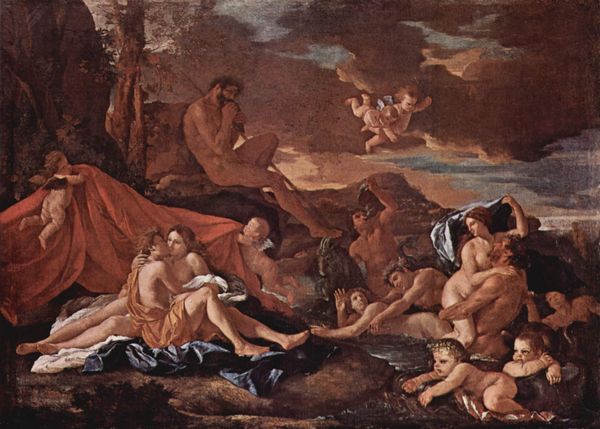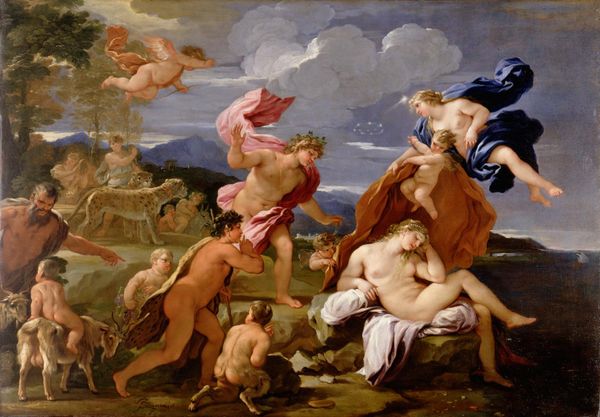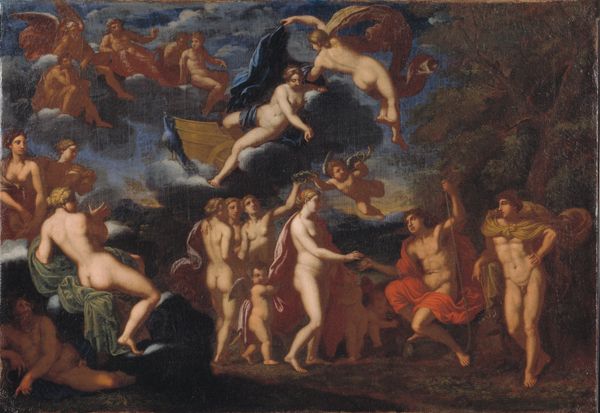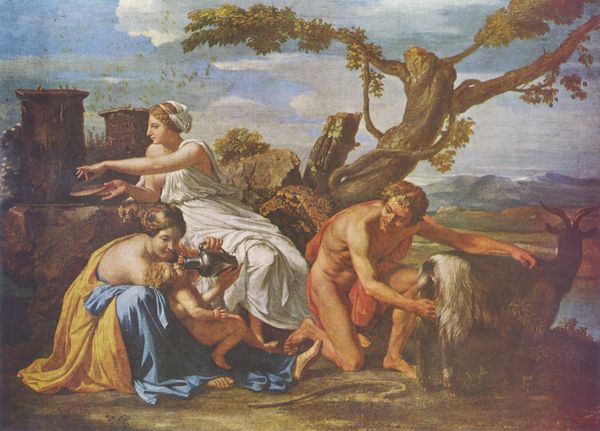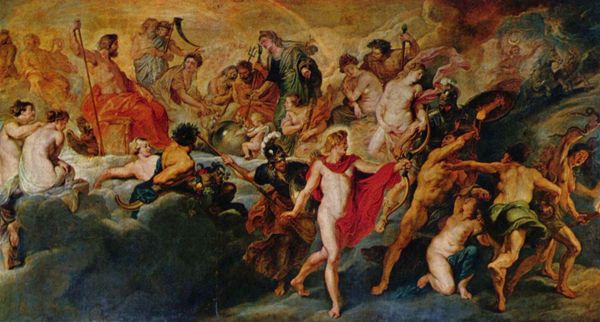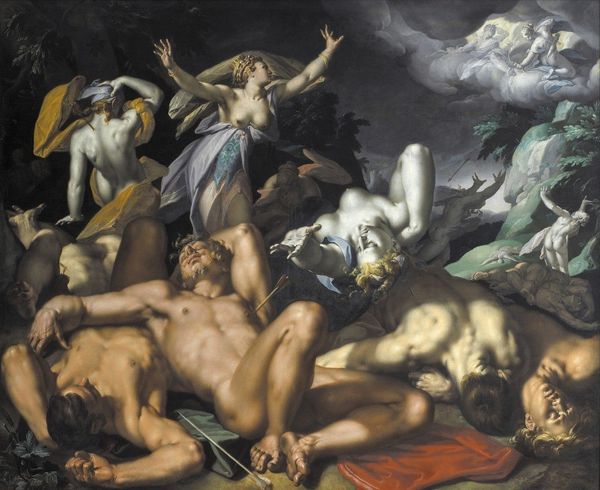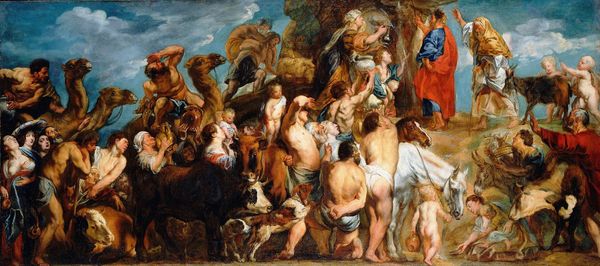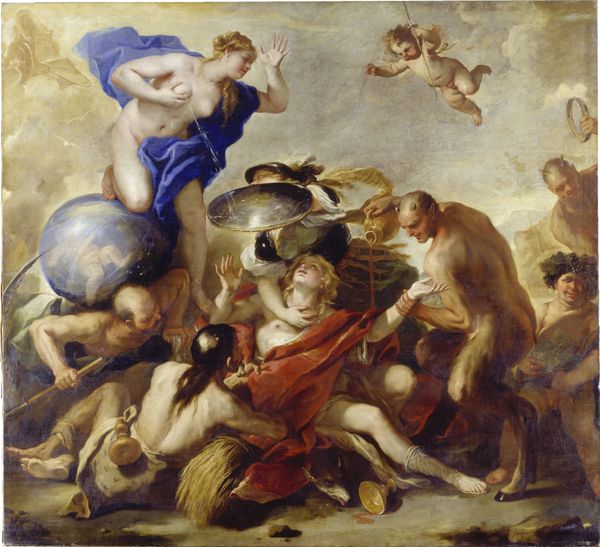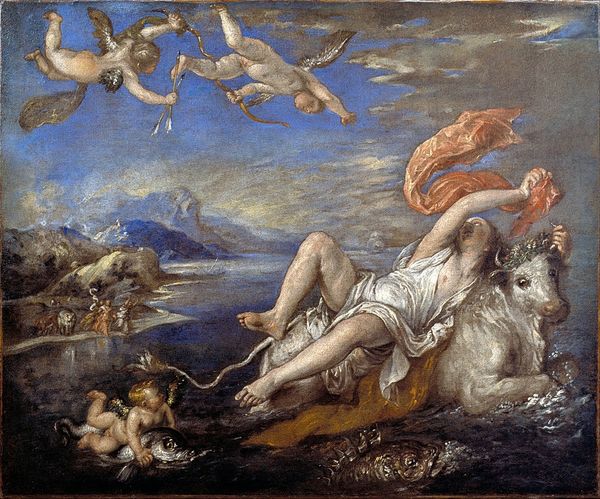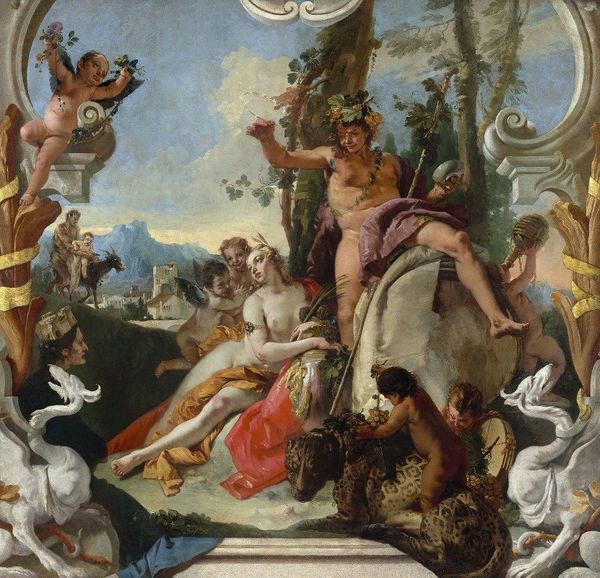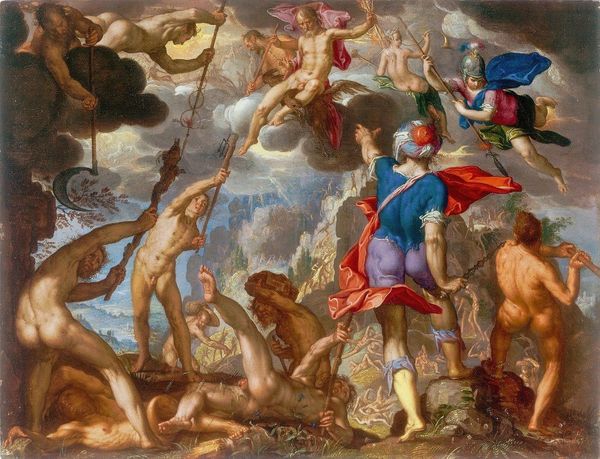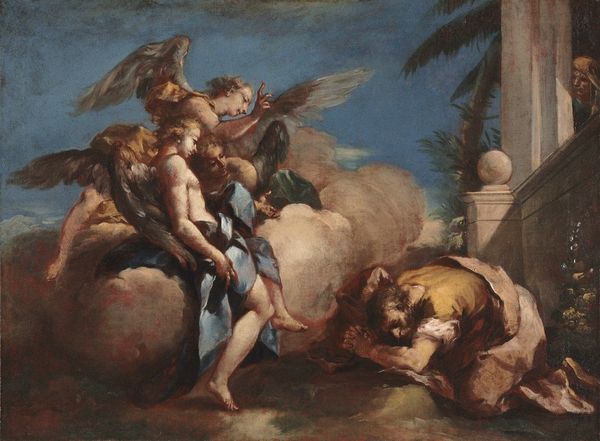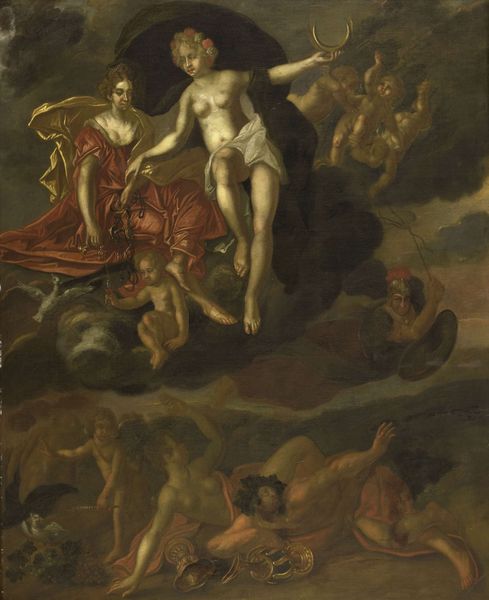
painting, oil-paint
#
allegory
#
baroque
#
painting
#
oil-paint
#
landscape
#
figuration
#
oil painting
#
mythology
#
history-painting
#
realism
Copyright: Public domain
Editor: Nicolas Poussin’s 1626 oil painting, Rinaldo and Armida, currently housed at the Pushkin Museum, is such a captivating tableau! There's an almost dreamlike quality to the figures amidst the classical landscape. What cultural conversations do you think Poussin was having with this piece? Curator: That dreamlike quality you observe is, I think, deliberately cultivated. Poussin, in a sense, is creating a public fiction, a moralizing tale presented through the palatable lens of mythology. He draws upon Torquato Tasso’s "Jerusalem Delivered", but why choose this particular moment of temptation and distraction in a military campaign? Editor: Maybe to explore the dangers of succumbing to pleasure, deviating from duty? It’s certainly present in the figures, but how did that message resonate at the time? Curator: Consider the context. Poussin worked in Rome, catering to a sophisticated, aristocratic clientele, and the papacy, which utilized art to convey specific messages. The Baroque style, with its heightened drama, was itself a tool. Might this painting subtly reinforce societal hierarchies, presenting ideals of leadership and self-control versus the allure of hedonistic indulgence? What do you think about the staging? Editor: The strong diagonal composition definitely draws the eye to Rinaldo and Armida, almost making them the fulcrum between the orderly procession in the clouds, and the...wildness...on the lower half of the scene. Curator: Exactly! And the figures on the top – it seems like Poussin uses figures from antiquity, as a staged performance for nobility to contemplate virtues in leadership. Editor: It’s amazing to see how a mythological scene could act as such a mirror to its contemporary society. Thank you. Curator: My pleasure. And understanding those historical filters changes how we perceive even the surface beauty of the artwork.
Comments
No comments
Be the first to comment and join the conversation on the ultimate creative platform.

